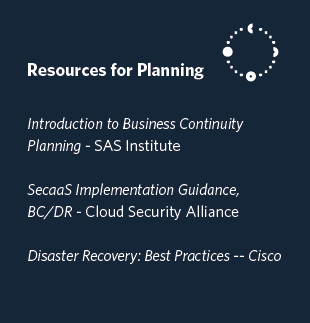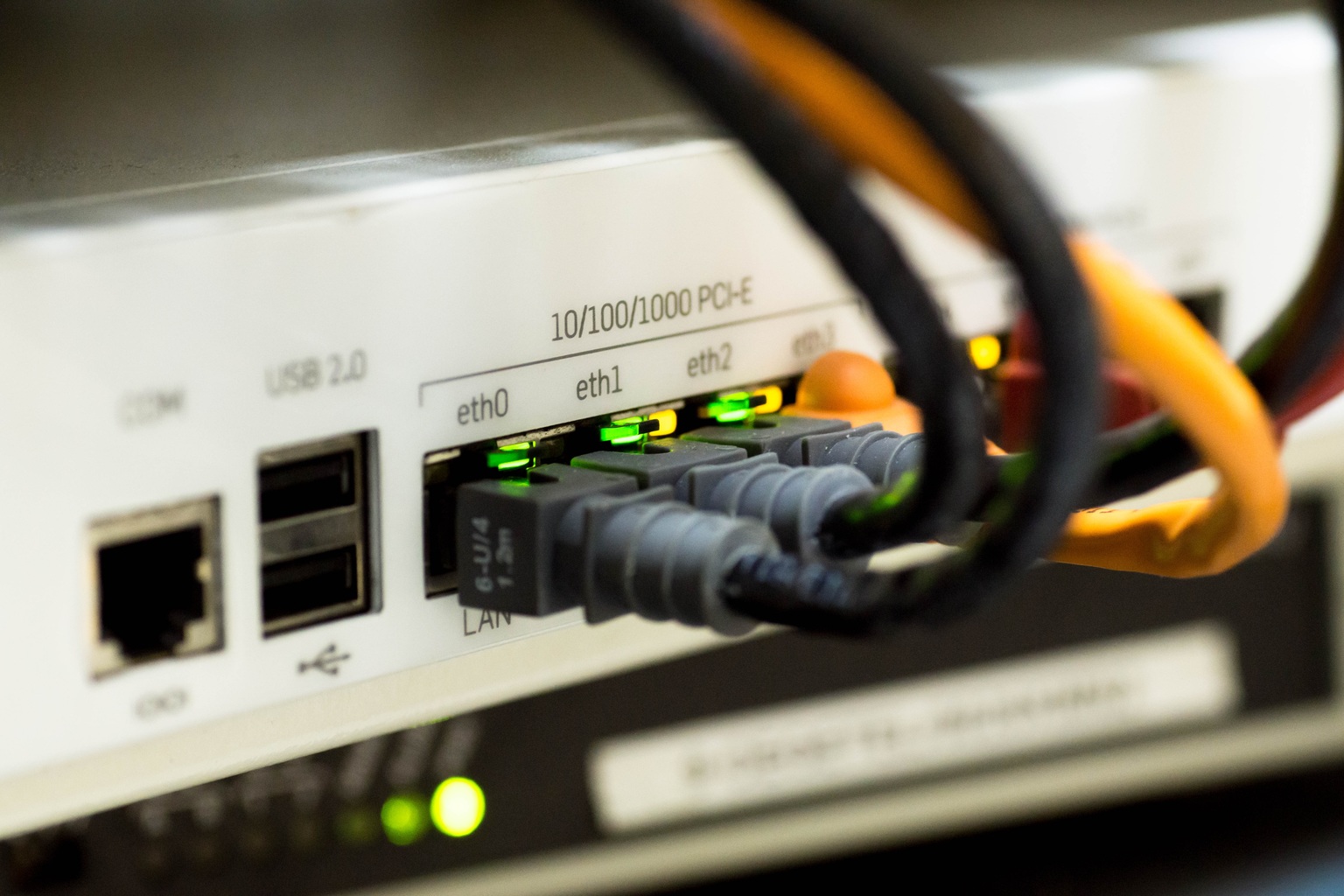Business continuity implementations that address traditional andemerging threats
• The cost for unplanned downtime has never been higher,
increasing 38% since 2010
• New Business Continuity and Disaster Recovery (BC/DR) models offer a broader mix of on-premises,
colocation and cloud service options that better align to business requirements and increased pressure for 100% uptime guarantees
• 29% of CIOs list maintaining availability of IT systems as their top priority
• Colocation technologies can position your enterprise to take advantage of these new BC/DR models if/when you decide to leverage a virtual solution
The Average Revenue Lost per Minute of Downtime is up $8,851
In only a little over 15 years, the Internet core has matured into a backbone strong and broad enough to move business online. It’s where distributed workforces find the tools they need, customer interactions take place, and the data that’s the lifeblood of your enterprise amasses.

While the digital evolution has resulted in new opportunities, the shift to XaaS and mobile applications has resulted in new risks as well. Consequently, the cost of downtime has never been higher. The average revenue lost per minute of downtime is up to $8,851. The per hour impact of downtime in midsize companies is nearly $60,000 for manufacturing firms, $158,000 for healthcare businesses and $400,000 for retail businesses. That’s a 38% increase since 2010, the first year of the study.
What’s the problem?
Traditional issues still impact enterprises, with 25% of all unplanned data center outages attributed to uninterruptible power supply (UPS) battery failure. Cybercrime is the fastest growing source of failure, increasing from 2% of outages in 2010 to 22% today.

Because of these pressures, it is critical to shift attention to maintaining 100% uptime by taking advantage of comprehensive BC/DR models that address traditional and emerging threats, and align to varying enterprise business objectives.
Determining What’s Best forYour Business
Deciding on which model aligns best with your business objectives begins with self-examination. Like any comprehensive IT initiative, it’s vital to form a steering committee that considers strategy components including where the BC/DR data center will be located, compliance requirements relevant to public and private cloud use, where mission-critical and non-production systems will be deployed and, as always, whether the cost of what you wish for matches the reality of your budget.
As you complete the evaluation process, it is essential to understand the solutions available to you. High-speed connectivity and the advent of public and private clouds has given rise to three primary BC/DR models.


#1 The Classic Model
A hardware-centric strategy that represents the way BC/DR traditionally has been implemented. Mirrored hardware assets are housed in geographically diverse locations and scheduled or synchronous
data replication occurs between the sites.
#2 The Virtual Model
The newer-age model. Enterprises house data and applications on a dedicated, virtualized server environment – either on-premises or in a colocation facility – and leverage cloud based backup and/or DR solutions.
#3 The Hybrid Model
This bimodal approach is a combination of the classic and virtual models, with enterprises backing up some applications in dedicated colocation environments and other applications in the cloud.
#1 THE CLASSIC MODEL
This strategy is based on two possible deployments: dual colocation facilities or an on premises data center connected to a colocation facility. Both variations should be connected via redundant network connections.
In the first example, shown below, the primary site is located at the customer’s premises – which is most frequently used when organizations are looking to move data off-site. The dual colocation method, shown in example two, is often leveraged by organizations

with an established point of presence in an existing colocation facility. In all instances, it is best to connect the primary site with the secondary site using redundant circuits – eliminating single points of failure in the network design.
WHEN THIS MAKES SENSE

• Your infrastructure has not been fully virtualized and you are unable to migrate applications to the cloud
• Legacy applications cannot be easily ported to the cloud
• You have compliance (e.g. PCI, HIPAA) and regulatory requirements that demand a physical address and cannot be in a cloud
• You do not have executive backing to move to the cloud and/or you do not have cloud experts on staff
The Advantages
• If you are moving to colocation for the first time, you are instantly mitigating risk, with colocation
providers offering 100% uptime SLAs, redundant generators and UPS systems, and built-in physical layers
of security
• If you choose a network-neutral colocation facility, you will gain
access to a community of network providers within the building that can tether back to your existing facility
• Your staff should already understand how to implement this solution and can offload the burden of uptime to
the colocation provider
#2 THE VIRTUAL MODEL
The virtual model refers to a business continuity strategy where enterprises leverage cloud services for all backup and DR applications. This is commonly leveraged when businesses have budgetary constraints and want to take advantage of a pay-as-you-go model, or have systems that are easily mimicked in a cloud environment, such as file and web servers.

pricing is more economic than paying for dedicated space year-round

There are two main ways that organizations backup to the cloud. In the first example, a company may keep its primary deployment in
an on-site data center, but rather than mimicking that hardware in a
redundant facility, it creates a secondary environment in the cloud.
The second example is similar, but more efficient. In this model, an organization has its primary infrastructure in a colocation facility that also hosts other cloud providers.

Rather than connecting over the public Internet, the enterprise directly connects to a cloud provider of choice through a private, dedicated connection within the facility. This interconnection preserves a “LAN-like” experience, with reduced latency as compared to the public Internet.

It also drastically lowers data transfer rates and networking costs. Additionally, if the enterprise evolves to a multi-cloud solution, it will be able to interconnect to an ecosystem of cloud providers within the same facility in the future.
WHEN THIS MAKES SENSE
• Your business has budgetary restrictions that would benefit from a pay-as-you-use model
• Your enterprise is leveraging an existing DR solution that is already cloud-enabled
• You have staff that understands how to implement cross-platform cloud architecture

Enterprises benefit from up to 2-3x reduced latency and 60-70% reduced outbound data transfer costs through connecting to cloud providers via direct connect within a colocation facility.
The Advantages
• Cost-effective. Pay-as-you-use
pricing is more economic than paying for dedicated space year-round
• Up to 2-3X reduced latency and 60- 70% reduced outbound data transfer costs through connecting to cloud providers via direct connect within a colocation facility
• Interconnection generally runs a few hundred dollars per cross connect
per month, versus thousands of dollars paid for redundant network connections to cloud providers
• Offload the burden of uptime onto the cloud provider
#3 THE HYBRID MODEL

This solution is a combination of the classic and virtual models. You may have a primary and redundant data center configuration, as well as a cloud backup. The hybrid model allows you to “right-fit” applications based on the use case and is a good option for companies that have several varying application types, or are wary of giving up server management or application control.
The hybrid model allows you to “right-fit” applications based on the use case and is a good option for companies that have several varying application types, or are wary of giving up server management or application control.
There are two primary ways to do this. In example one, a company keeps its primary site on-premises and leverages network connections to both cloud and colocation providers as DR sites. In example two, a company uses colocation as a primary site, then connects to a secondary colocation facility for a redundant site as well as its cloud backup. With example two, rather than connecting to the cloud over the public Internet, the company simply provisions a cross connect to that provider within the colocation facility.

WHEN THIS MAKES SENSE
• You are trialing cloud for the first time and want to gauge usability without putting applications at risk of downtime
• You have applications that require a dedicated environment while others are easy to use or more cost-effective in the cloud
• You have resources in-house that understand both solutions
The Advantages
• Reap the benefits offered by all options
• Map solutions to applications – burstable apps can be backed up in cost-effective cloud environment while more complex applications can be backed up in a dedicated environment

THE NEXT STEP
Bottom line: BC/DR is moving up the list of enterprise IT priorities, and there are more choices for aligning cloud models with your business objectives. When you are evaluating a redundant solution, you should bear all three models in mind. If you are still leveraging a classic BC/DR model and are not ready to migrate to the cloud, consider a solution that will set you up for success in the future if/when you decide to leverage a virtual solution.
Colocation not only ensures uptime for your physical backup, it also provides low-cost, high performance access to clouds.
Colocation not only ensures uptime for your physical backup, it also provides low-cost, high-performance access to clouds, networks and other providers that you may need to leverage when building a virtualized BC/DR solution in the future.